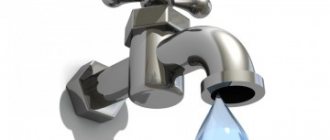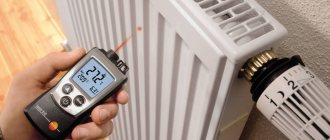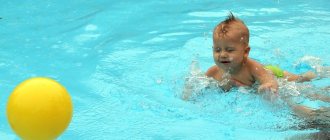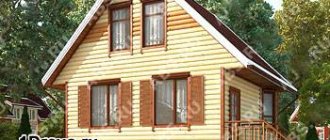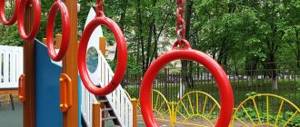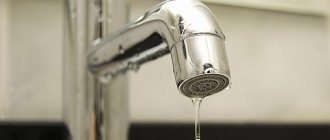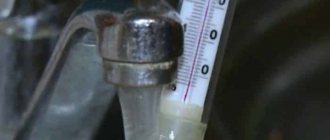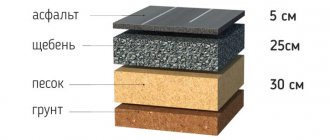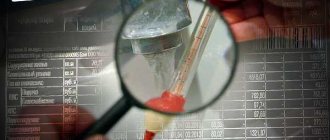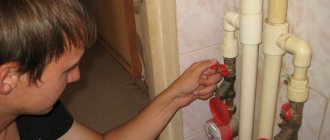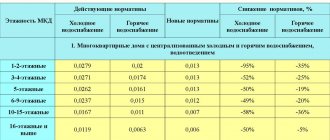In the modern world, we are all accustomed to comfort. A person does everything possible to surround himself with beauty, warmth and comfort. The tap water supplied to apartment buildings is one of the most important aspects of a comfortable life, along with electricity, heating and gas. At the same time, H2O no longer enters users’ apartments cold, but heated to a certain level. You should understand in detail what the temperature of hot water in the tap should be according to the standards for hot water supply.
Supply temperature characteristics
The liquid medium entering the water intake point (for example, a shower stall) should not exceed 75ºC. It must comply with this indicator for a number of reasons:
- First of all, too high t is unsafe for the health of residents. Even short contact with boiling water can lead to serious consequences.
- In addition, excessively hot liquid can damage the water supply, since plastic pipes are now increasingly being installed in apartments.
In open circuits
For this category of water supply areas, a certain temperature regime is provided. In paragraph 2.2. SNiP indicates its lower and upper boundaries. The minimum is 60ºC, the maximum is 75ºC. Since the heat loss in this water supply option is much greater, a fairly high limit is set for it.
In closed systems
For water intake points of this type, slightly different indicators are prescribed. According to approved standards, the minimum value cannot fall below 50ºC, the maximum cannot exceed 75.
What should be the temperature of hot water in the tap in the apartment according to supply standards?
To determine the normal t values of tap fluid, you need to refer to SanPiN. This document specifies mandatory requirements aimed at ensuring safety when supplying heated H2O to multi-storey buildings. All of them were developed and adopted by the chief state sanitary doctor of the Russian Federation.
The subsection “General Provisions” of the sanitary rules states the following: in water intake areas, the temperature regime must be no higher than 75ºC and no lower than 60. The type of water supply scheme is not taken into account. These standards are established for the purpose of:
- preventing the likelihood of developing various skin pathologies that can appear due to the use of poor quality tap fluid;
- minimizing the chlorine content in H2O remaining after the initial chlorination stage;
- destruction of pathogenic infections, viruses, bacteria that cause diseases.
Thus, maintaining a strictly defined t makes it possible to ensure the epidemiological safety of residents.
SNiP
When figuring out how many degrees the hot water from the tap in an apartment should be according to the standard temperature, you should know that it is supplied to homes pre-softened. The process is regulated by a corresponding document developed and approved for the purpose of planning external systems and water supply structures. The temperature regime of the resource in water intake zones must correspond to the established values:
- not less than 60ºC - in central communications connected to an open heating network;
- not lower than 50ºC - in DHW with connection to closed circuits;
- not higher than 75ºC - for water pipes of both types.
At the same time, the liquid that is supplied to social security organizations, preschool and school institutions, sanatoriums, orphanages differs from the above indicators. The maximum heating of H2O produced by these structures cannot exceed 37ºC.
GOST
The state standard also regulates the permissible limit t of the water resource supplied to apartment buildings. According to the established provisions, the following mandatory rules apply:
- the liquid medium in water intake areas with connections to open communications should not be less than 60ºC;
- in those connected to closed networks - at least 50ºC.
The maximum that applies to both of these points is 75ºC.
SanPiN
Sanitary and hygienic standards for the temperature of hot water supply to apartments indicate how many degrees there should be in the hot water system. Basic Act No. 20 was approved by order of the leading sanitary doctor of the Russian Federation.
MBFT-75 Membrane for 75GPD
AMETHYST - 02 M up to 2 cubic meters/day.
Aeration unit AS-1054 VO-90
The law establishes permissible deviations from the designated boundaries. They vary in the range of up to 5ºC and depend on the time of day. Of course, at the entry point the temperature of H2O is recorded as higher. The liquid medium on the way to the residents' faucets has time to cool down by several degrees.
Legalized values affect the central highway in closed and open systems, dedicated communications and autonomous circuits of high-risk objects. These include hospitals and preschool institutions. In accordance with the standards, the water resource must be completely safe and suitable for consumption.
Hygienic standards are developed and approved in order to:
- prevent contamination of the liquid by various viruses, infections, bacteria that spread easily at temperatures less than 60ºC;
- reduce the chlorine level after the preliminary chlorination procedure.
That is, the permissible temperature range, regardless of the type of water supply system, must be kept within the range of 60 to 75ºC.
Social standard No5
The Ministry of Housing and Communal Services has prescribed recommendations assessing the implementation of state indicators determined to be normal for providing users. The fifth number indicates the temperature of the heated water resource during the daytime from 06:00 to 24:00. It corresponds to 50ºC.
At the same time, the temperature standard in a hot water tap (degree according to GOST in residential buildings) is checked by local supervisory authorities on an individual basis. So, the minimum requires 60ºC in the system. But taking into account permissible deviations, during the day it can be 57, and at night only 55. This condition is fully confirmed by SanPiN.
According to the order, the following rules apply:
- during daylight hours the error cannot exceed 3ºC in the direction of decreasing temperature;
- at night - no more than 5.
If the actual heating does not correspond to the established one, residents of the house have the right to demand a revision of the amount of payment for the water resource received by 0.1% for each hour of violation.
When the temperature drops to 40ºC, users have the right to pay for the service at the price of cold water. In order to confirm the fact of non-compliance with the standards, it is necessary to draw up a special document-act.
DHW standards for the current year
The hot water temperature parameters for 2021 have not been adjusted compared to previous periods. The permissible range of temperature conditions varies from 60 to 75o C. These parameters are established by the Sanitary and Epidemiological Service, GOST, sanitary norms and rules. In open heat supply systems, the liquid temperature should not fall below 60o C. In closed heat supply pipelines, the maximum permissible minimum value is 50o C.
If the temperature of the hot water supply is far from the specified figures, the owner of the apartment has the right to demand a reduction in payment. When the temperature decreases to 40°C, payments are calculated according to cold water consumption tariffs. The maximum temperature value, regardless of the type of pipelines, is 75 ° C. These indicators must be observed regardless of the location of water intake. However, the law provides for permissible errors in these parameters:
- 3o C below the established minimum during the day (from 5:00 to 24:00);
- 5°C below the established minimum at night (from 24:00 to 5:00).
As for the upper threshold, 76 degrees Celsius is already considered a violation.
What to do if there are deviations
If the maximum and minimum temperature of hot water (DHW) in the tap in the apartment deviates from the standards, you should proceed according to plan:
- Contact the management company representatives by phone and inform them of the discrepancy between the indicators. Call an employee of the organization to check the data.
- Decide on the date of your visit to the specialist. If required, make a written statement.
- While the inspector is working, make sure that he prepares the appropriate inspection document, which will indicate the measurements being taken.
- Place your signature on the completed document. The called master must sign there.
- The last step is to wait for the recalculation.
In a situation where the water resource supplied to a home turns out to be insufficiently heated or overheated, the management company is responsible for the violation. She is also responsible for troubleshooting.
Permissible fluctuations
At night, the tap liquid should not be colder or warmer than the set level by more than 5ºC. Thus, the minimum can be 55 and the maximum 80 degrees. This applies to open water intake systems. For such schemes, the minimum value is 45ºC at night from 00:00 to 05:00.
During the daytime, a difference of 3 degrees is considered acceptable. The liquid medium can vary in the range from 57 to 78ºC. This condition applies to water supply communications of the above type.
Main table dispenser AquaPro 919H/RO (hot and cold water)
Main table dispenser AquaPro 929CH/RO (cooling/heating)
Floor dispenser AquaPro 311 (empty, without cooling)
A slightly different regime applies to closed ones. The lower heating value cannot be less than 47ºC during the day from 05:00 to 24:00.
Recalculation if the temperature does not meet the standards
If the temperature of hot water at the time of collection was only 40 degrees, then payment for its consumption must be made at the rate for cold water. In order for recalculation to be made, it is necessary to measure the water temperature .
First, you should contact the dispatch service of the management company or housing and communal services.
It is mandatory to record an application for water temperature below the required level in writing, indicating the application number, the time of its acceptance and the name of the dispatcher. Perhaps the drop in water temperature occurred due to a technical malfunction of the pipeline or for some other known reason.
In this case, the dispatcher is obliged to notify about the emergency mode and the timing of troubleshooting. If the temperature of the supplied hot water is reduced for unknown reasons, it is necessary to agree on the day and hour of measurements. Next, after taking measurements, a report is drawn up. The number of copies of this document must be equal to the number of participants in the procedure. Based on the measurements taken, the payment for hot water is recalculated or not according to the tariff for cold water.
Features of measurements
- Draining the water should take at least two to three minutes.
- It is worth paying attention to where the hot water comes from (for example, from a heated towel rail pipe or from an “independent” pipe).
It is also necessary to eliminate the discrepancy with SanPiN, for this there is article 7.23 in the Code of Administrative Offenses, it reads “Violation of standards for the provision of public utilities” and implies a fine .
What water is considered hot - measuring the temperature in the water supply
Personal measurements have no legal force. The event is carried out only to confirm doubts about compliance with the requirements for the supply of H2O. If violations are nevertheless recorded, a qualified specialist should be called to record the fact of non-compliance. After the examination, an official document will be drawn up that will confirm the discrepancy between the declared and actual temperature values.
Temperature measurements: sample report
As we have already indicated above, if you measure the temperature yourself, the results will not be taken into account officially. To do everything according to the rules, you need to invite an employee of the management company to conduct an examination. Based on its results, the owner of the property will be issued a corresponding document, which we suggest that you familiarize yourself with:
What should be the quality of tap fluid?
Home owners are accustomed to taking care of its quality characteristics on their own. To do this, they install various filtering devices to make H2O as drinkable as possible. And it is right. When planning to purchase a filtration device, you should pay attention to products that have long proven themselves to be the best. This organization offers its customers only the best products at an attractive price.
However, the water resource entering our homes must also meet certain pressure criteria. Agree, it’s unpleasant to watch a thin trickle barely running from the tap. The opposite situation (too much pressure) also does not lead to anything good. Valves, couplings and other elements of the water supply system break.
Therefore, certain standards have been approved for hot water supply from 0.3 to 4.5 atm. If the actual value does not correspond to the established one, you should send an application to the Criminal Code for recalculation of payment for services. The same must be done when a large amount of organic and inorganic impurities (rust, wood, earth, etc.) is present in the liquid medium.
Recalculation of payment in case of violation
For the period during which the DHW temperature regime did not comply with the standards established by law, the subscriber has the right to demand a recalculation. It is carried out on the basis of an act drawn up by an employee of the management company or resource supply organization.
To carry out recalculation, the consumer must write a statement, to which an act is attached. The application must indicate the recalculation period. The beginning of this period is the day the act is drawn up. The end is the day of inspection based on the results of troubleshooting (if any were identified and eliminated).
For the specified period, utilities carry out recalculation according to the following rules:
- if the temperature is below normal by more than 3 degrees (during the day), payment is reduced by 0.1%;
- if the temperature regime in the DHW system is less than 40º C, a tariff is applied to calculate payment for hot water supply.
If the recalculation is refused, the consumer should contact the State Housing Inspectorate, Rospotrebnadzor or submit an application to the court. If a violation of the law is established on the part of the management company or a resource supplying organization, they will be required to perform a recalculation, as well as pay a fine of up to 10 thousand rubles for violating the standards for the provision of utility services (Article 7.23 of the Code of Administrative Offenses).
Where to contact if the temperature of hot water (DHW) in the tap in the apartment does not meet the standard
Algorithm of actions:
- Contact the emergency dispatch service and find out whether they are competent to resolve this issue.
- If a controversial situation arises with a service provider, an examination will be required that can confirm the fact that a water resource is supplied of inadequate quality. If the management company does not want to provide a specialist for inspection, the response will be to contact Rospotrebnadzor.
- Based on the results of inspection activities, a document is generated according to which violations will be eliminated. Each party retains one copy.
- The inspection report, drawn up in accordance with all the rules, must be sent directly to the management company.
Filing a complaint
If there are serious deviations from the hot water temperature standards in the apartment, the owner has the right to submit a complaint to the organization providing the water supply service. Poor performance of obligations is recorded from the moment:
- confirmation of non-compliance with standards by management company specialists;
- communication between the user and the emergency dispatch service employee;
- identifying violations through the use of measuring instruments;
- generating a document containing the results of the inspection.
The consumer has the right to file a complaint from the period of detection of failures until they are completely eliminated.
Detailed plan and necessary documentation
The filing of a complaint application should be approached as responsibly as possible. When filling out the paper, you must adhere to a number of mandatory rules:
- at the top right you need to indicate information about the addressee and applicant (personal, address, contact information);
- put the name of the document “Application” in the center and describe the current situation below;
- Next, you should write an appeal to the head of the housing inspectorate and reflect the demand for an examination and elimination of deviations;
- All that remains is to sign the complaint-application and indicate the date.
Floor-standing dispenser AquaPro 6207CH (cooling/heating/room temp.)
Wall-mounted dispenser AquaPro 3207CH (cooling/heating)
Aeration column AS-0844 VO-90
You can submit a complaint in person, by mail or electronically. If claims regarding inconsistency in the temperature in the hot water riser remain unanswered (by the Criminal Code, FSN, Rospotrebnadzor, etc.), you will have to seek help from a judicial authority. In this case, it is necessary to prepare the required documentation:
- agreement with the supplier company;
- all existing acts generated during the submission of appeals to various authorities;
- if necessary, test results of tap fluid.
Possible outcome
If the complaint of a water resource consumer is found to be justified by law, he can count on:
- complete elimination of failures;
- cancellation of payment for H2O of inadequate quality;
- compensation for moral damage;
- reimbursement of costs for the purchase of household filtration products that have become unusable due to the quality characteristics of the liquid medium.
What threatens housing and communal services and the management organization
At the time of consideration of the case, the emphasis is on the law “On Protection of Consumer Rights”. According to its aspects, the housing and communal services or management company will oblige:
- reduce the cost of services provided;
- compensate for the damage caused by independently eliminating problems with low-quality liquid;
- cover other consumer expenses resulting from non-compliant use of H2O.
Since 2021, homeowners have the opportunity to demand compensation for moral damage.
What to do if the rules are violated
Valid reasons for stopping hot water supply are considered to be accidents in the main water supply or pumping station, as well as preventive maintenance or repair work in accordance with the schedule. In the latter case, the relevant services must notify subscribers in advance of maintenance or repairs. Stopping hot water supply is allowed for no more than four hours.
If you determine that the liquid does not meet the requirements prescribed by law, you must send a paper application to the housing and communal services or management company. It is advisable to draw up the document in two copies: send one to the addressee, and keep the other for yourself. On your copy, the specialist marks the receipt of the document (the date and name of the person who accepted it must be indicated).
It happens that technical faults on the central line are to blame for changes in the temperature regime. In this case, the service employees are obliged to inform you about the problems, as well as indicate what temperature the hot water should be in the near future and when exactly the problems will be corrected. If the reasons for the change in temperature are unknown, you should call a specialist from the management company or resource supply organization to carry out the measurement procedure. Upon completion of the inspection, a report is drawn up indicating the measurement results. It is necessary to fill out two identical documents, one copy is given to the owner of the apartment.
If the violations have not been eliminated or they are repeated regularly, the subscriber has the right to send a complaint to the management of the management company or to the public utilities department. It is important to compose your application correctly; you must provide all the necessary details. The complaint states:
- name of the organization, last name, first name, patronymic of the managing person;
- consumer data - full name, place of residence, contact details;
- text outlining the essence of the problem. The results of measurements must be indicated with reference to a report drawn up by a specialist from the relevant service or management company. You can also indicate the dates of previous requests for the same problem;
- requirements to eliminate violations of legal norms;
- signature of the apartment owner, date of application.
The document is drawn up on paper in two copies. It may be typed or handwritten. One copy is submitted to the management company or utility service, the other remains with the subscriber. A registration mark is placed on it indicating the entry number, date, and surname of the person who accepted the complaint.
By law, a 30-day period is allotted for consideration of a consumer’s appeal. In some cases, utility staff may be able to respond to the customer more quickly. As for the actual period for eliminating violations, it is 45 days from the date of receipt of the application from the subscriber.
As practice shows, the problem can be resolved as soon as possible if a collective complaint is filed from several consumers. Therefore, invite your neighbors to sign the application.
If there is no response to the appeal at the end of the 30-day period, you should send your demands to the organizations exercising state supervision: the State Housing Inspectorate, Rospotrebnadzor, the prosecutor's office. In this case, penalties may be applied to officials in accordance with the Code of Administrative Offenses for violating the legislation on citizens' appeals. This does not relieve the responsibility for troubleshooting.
Recalculation of payment for hot water supply
If guilt on the part of the supplier company has been fully proven, recalculation measures are mandatory. To do this, the user needs to create an appropriate application and attach the results of the examination to it. After which the organization will have 5 days to review the established tariff.
The calculation is carried out in accordance with the approved coefficient of 0.1% for every 3 degrees of error. In the case when the temperature drop is fixed to a level of 40ºC, the consumer pays for heated water as cold.
Sample application for recalculation
Below you can see an example of document preparation:
Arbitrage practice
There are many examples when service providers were held accountable in accordance with the law for discrepancies in the temperature regime of the water resource supplied to residential buildings.
Thus, user N. accused the Criminal Code of improper performance of duties. To wash, his family had to pre-heat tap water using gas. The situation remained unchanged throughout the year, despite repeated complaints from resident N.
In his claim, the citizen reflected the need for recalculation and compensation for moral damage. The court sided with the plaintiff, and his demands were fully satisfied. The management organization suffered a well-deserved punishment for the discrepancy between the water temperature in the hot water supply pipe system and the domestic hot water supply standards.
